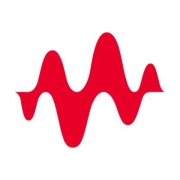Digital Experience Monitoring (DEM) enhances digital service performance by providing insights into user interactions across applications and networks.
Enterprises use DEM to analyze end-to-end user experiences, enabling them to identify and address performance issues proactively. This monitoring approach blends performance metrics and real user feedback for a comprehensive understanding of digital touchpoints.
What are critical features of Digital Experience Monitoring?In finance, DEM assists in ensuring seamless online banking experiences under high transaction loads. Retailers use it to optimize site functionality during peak shopping periods, maintaining performance consistency. In healthcare, DEM ensures reliable access to critical patient data and telehealth services.
This proactive monitoring strategy aids in preempting performance challenges, aligning digital services with organizational objectives, and fostering a better understanding of user expectations.
| Product | Market Share (%) |
|---|---|
| Nexthink | 22.8% |
| SysTrack | 13.0% |
| ThousandEyes | 12.6% |
| Other | 51.6% |




























By using a DEM solution, IT teams can track and measure different factors that can impact users, such as CPU, memory, and hardware usage, latency, software performance, and more. In turn, these metrics, which are gathered continuously from the endpoint and combined with intelligent analysis and automation, can then help IT departments quickly diagnose, remediate, or even predict problems without notification from the user. In addition, having a DEM solution is important because it can identify any vulnerabilities that contribute to outages, downtime, or disruptions to the user experience, such as slow page load times, and can also assess the root cause of issues that affect performance while simultaneously recommending solutions.
By providing insights into application performance and user interaction, DEM helps you identify and address performance bottlenecks. This leads to smoother and faster digital experiences, resulting in higher user satisfaction and retention. Understanding user journeys and optimizing them can significantly enhance the overall experience.
What are key metrics in DEM?Key metrics include response time, error rates, and availability. These metrics help you understand the speed, reliability, and consistency of your services from the user's perspective. Analyzing these metrics allows you to pinpoint where issues arise and take action to ensure optimal performance.
How does DEM help in proactive problem resolution?DEM solutions often include real-time monitoring and alerting mechanisms that notify you of potential issues before they impact users. With these insights, you can proactively resolve problems, reducing downtime and improving overall service reliability.
Why integrate DEM with existing IT infrastructure?Integrating DEM with your current IT infrastructure provides a comprehensive view of performance across all digital touchpoints. It ensures seamless monitoring and analysis, aligning with your existing processes and enhancing your ability to deliver superior digital experiences.
What should you look for in a DEM solution provider?When selecting a DEM provider, consider factors like scalability, ease of integration, and the ability to support multiple platforms. A provider should offer detailed analytics, customizable alerts, and robust reporting tools to help you effectively manage and optimize digital experiences.